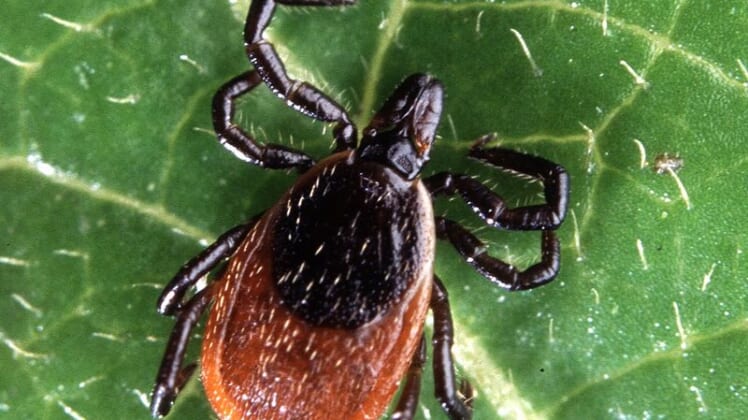
Tick-borne infections are out of control in parts of the United States — especially in the Northeast.
I say they’re out of control because thousands of new cases of Lyme and other diseases are popping up each year, and local governments don’t seem to be doing much with regard to monitoring and preventing the excessive amount of wildlife roaming these areas. Deer have become part of our daily lives, roaming around highly populated, metropolitan areas like New York and New Jersey where they were not a problem years ago.
Starting in spring, I see deer in my front and backyard at all times with nothing to fear. We, on the other hand, have everything to fear, because there are a multitude of diseases that come along with these beautiful creatures.
Lyme, while probably the most well-known of all the tick-borne diseases, is just one in a growing number of illnesses that can be passed on to humans from ticks.
Deer ticks, or black-legged ticks, are most commonly seen throughout the Northeastern and Midwestern regions of the country. Humans are at greatest risk for being bit by one of these ticks in the spring, summer and fall, however, according to the Centers for Disease Control and Prevention (CDC), adult deer ticks may be out searching for a host any time temperatures are above freezing. These ticks can transmit Lyme disease, anaplasmosis, babesiosis, Powassan disease and a newer disease which concerns me; Borrelia miyamotoi.
B. miyamotoi is a spiral-shaped bacteria that is closely related to the bacteria that cause tick-borne relapsing fever (TBRF), according to the CDC. The symptoms can be similar to those of Lyme disease including fever, chills, muscle aches, head ache. But, also similar to Lyme, infection with B. miyamotoi bacteria, if left untreated, could develop into severe arthritis or even cause nerve damage.
Diagnosis for this particular infection is complicated because the tests available for it are non-specific, but specialized labs can detect it in the DNA of the organism in positive blood samples. Within a few days of being bitten, patients may develop a rash similar to the “bullseye” we all know to be associated with Lyme, and if it’s not treated, it the symptoms can become chronic.
Pregnant women, elderly and immunocompromised patients have an increased risk for developing an infection if they are bitten by a tick carrying this bacteria, but it can be treated with a course of antibiotics, like tetracycline, usually taken for about two weeks.
As always, the best prevention is the best medicine.
- Avoid wooded, bushy areas and tall grass, and if you want to go hiking this summer, do yourself a favor and stay on a trail.
- Wear long pants and sleeves and spray exposed areas with insect repellent.
- Do frequent tick checks on yourself and your loved ones – including your pets!
- Bathe or shower after coming in from outdoors to more easily find ticks and wash them off before they really sink their teeth in.
- Throw your clothes in the dryer on high heat to kill any ticks that may be hiding.
So enjoy your summer, but do it safely.
